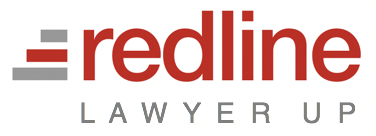Described as the “fourth Apollo crewmember,” and credited with saving thousands of lives by improving common medical procedures like IV insertion, a checklist aims to solve one of two operational vulnerabilities humans have in tackling any decision, problem, or task: ignorance — lack of information, and ineptitude — failure to apply known information correctly or consistently. It’s not that we don’t know; it’s that we seem to lack the attention and focus to invest in marshalling what we do know, in a readily accessible form.
A simple checklist is a powerful legal knowledge management tool, and ideally suited for assisting counsel in drafting or negotiating standard categories of agreements.
Lawyers of Redline have posted an impressive collection of handy checklists for all kinds of situations. For example, there’s a checklist for IP ownership clauses, and one for B2C arbitration provisions and class action waivers in online ToS. Each is constantly being updated and improved.
Here are selected excerpts from a checklist for evaluating the other side’s confidentiality agreements (on the assumption that your client will disclose the client’s valuable and proprietary information):
Defined Purpose. If the NDA contains a defined “purpose” for the CI exchange, is the purpose used in order to restrict permitted use of CI, or is it used in order to limit the type of information that qualifies as CI (i.e., to qualify as CI, the info must be germane to the purpose)? If the latter, either pushback or ensure the client understands the risks of disclosing something that’s not deemed germane ….
Affiliates. If affiliates are not mentioned, consider including them. (Even if your client has none now, it may later.) If they are included, ensure language making the signatory responsible for affiliate breaches. In all cases, affiliates should be defined to mean those controlling, controlled by, or under common control ….
Special Restrictions. Consider including restrictions against (a) reverse engineering, (b) using CI to develop or improve any product or technology, (c) using CI to enhance a patent portfolio, or (d) using CI to assess whether patents are infringed. ….
Residuals. Consider pushing back on the clause or, failing that, adopt defensive measures to protect CI: (a) no intentional memorization; (b) no license to IP; (c) can use but not disclose; (d) limit to non-tangible information; (e) limit to technical information and not financial, business, marketing, or other information ….
Discover more at Redline.

Redline is a dynamic collaboration environment for a select cadre of lawyers worldwide, and a powerful knowledge management platform. Watch the trailers Lawyers with Mojo and Knowledge is Power, or go here to learn more.
The intended audience for this post is licensed and practicing lawyers, not laypersons seeking legal advice for their situation. If you are not a lawyer, hire one before using or relying on any information contained here. This post is: (1) informational only and not intended as advertising or as solicitation for legal services, (2) not intended to render legal advice to you, and (3) not a substitute for obtaining legal advice from a qualified attorney to assess your exact situation. The information here is subject to change and may not be applicable or correct in your jurisdiction. The views and opinions expressed here are Sean’s alone and do not necessarily represent the positions of Sean’s present or former employers, law firms, or clients.